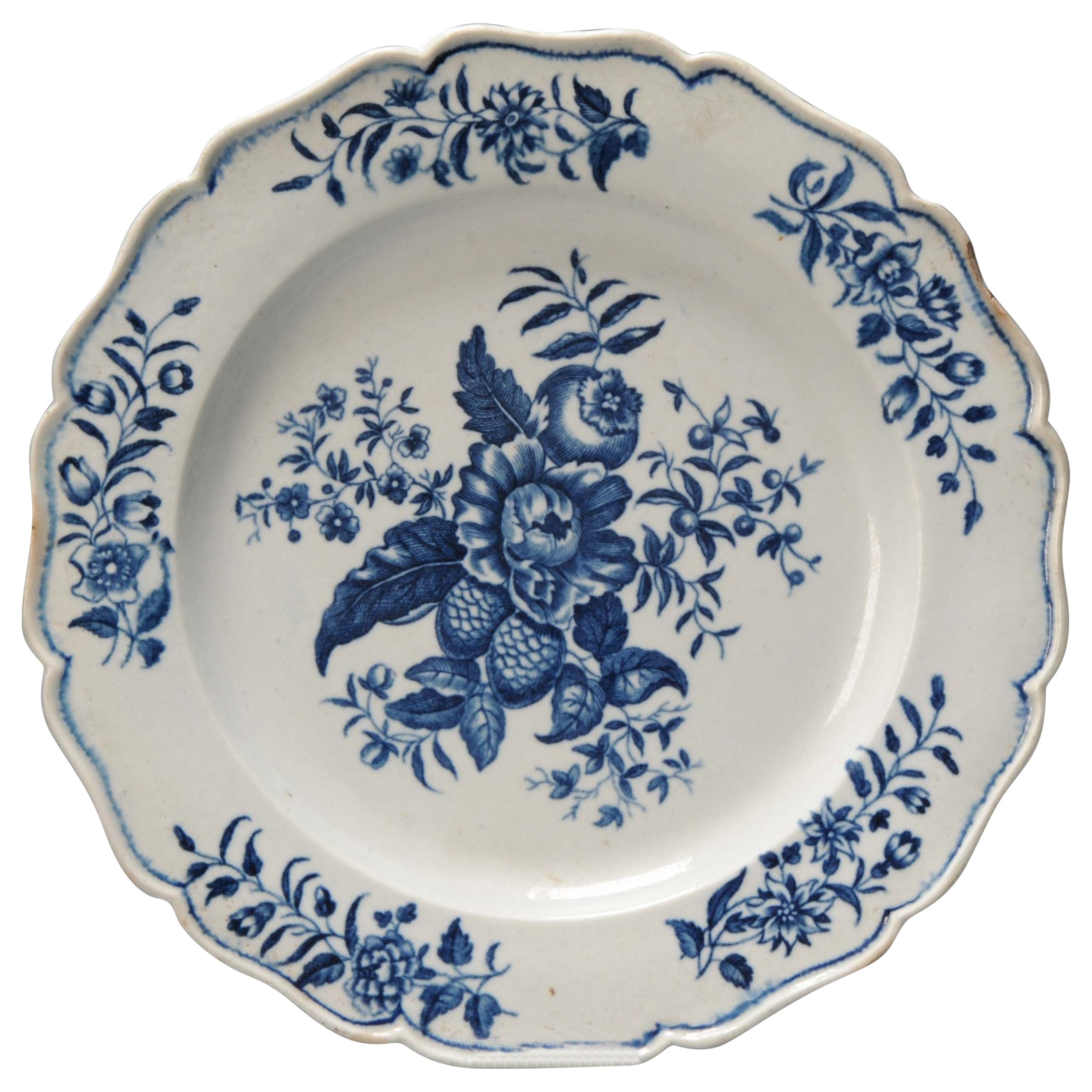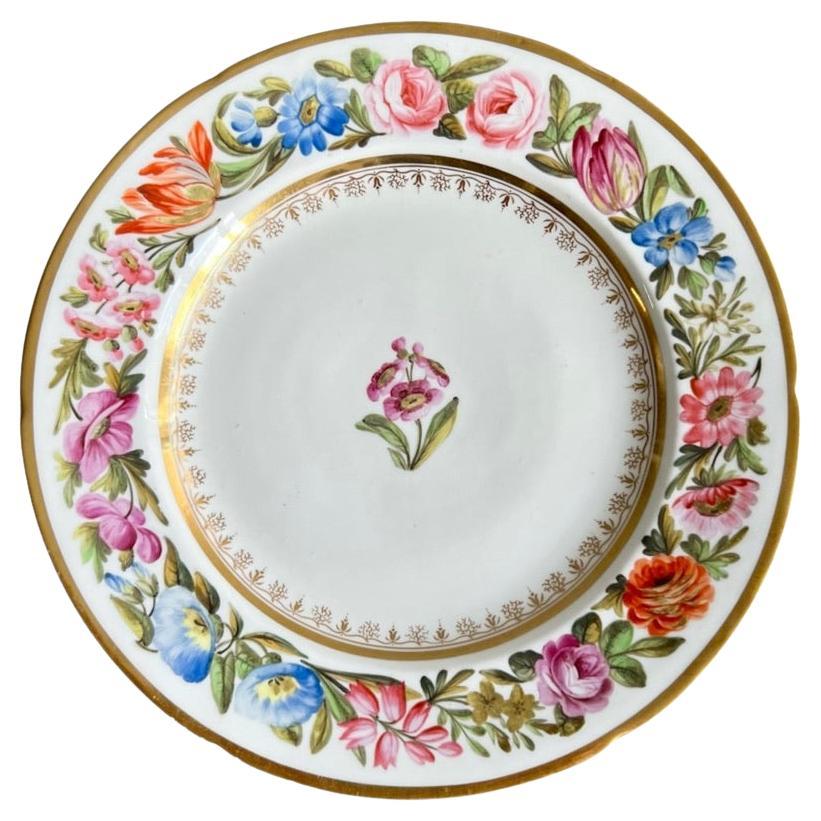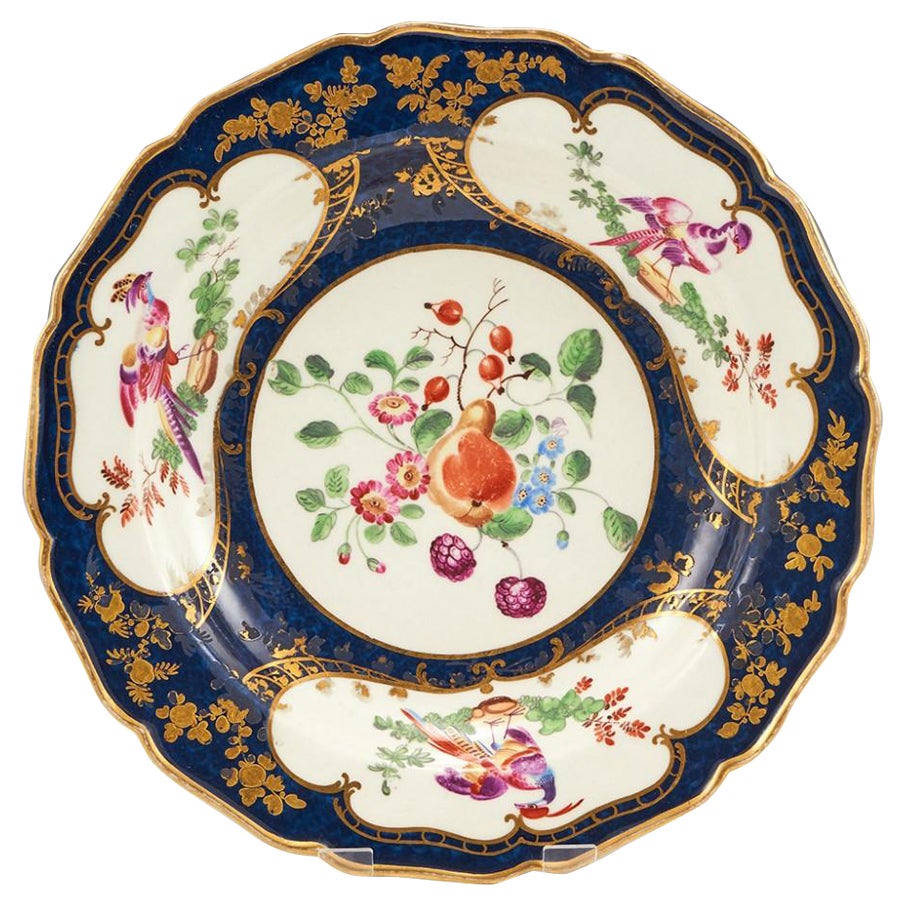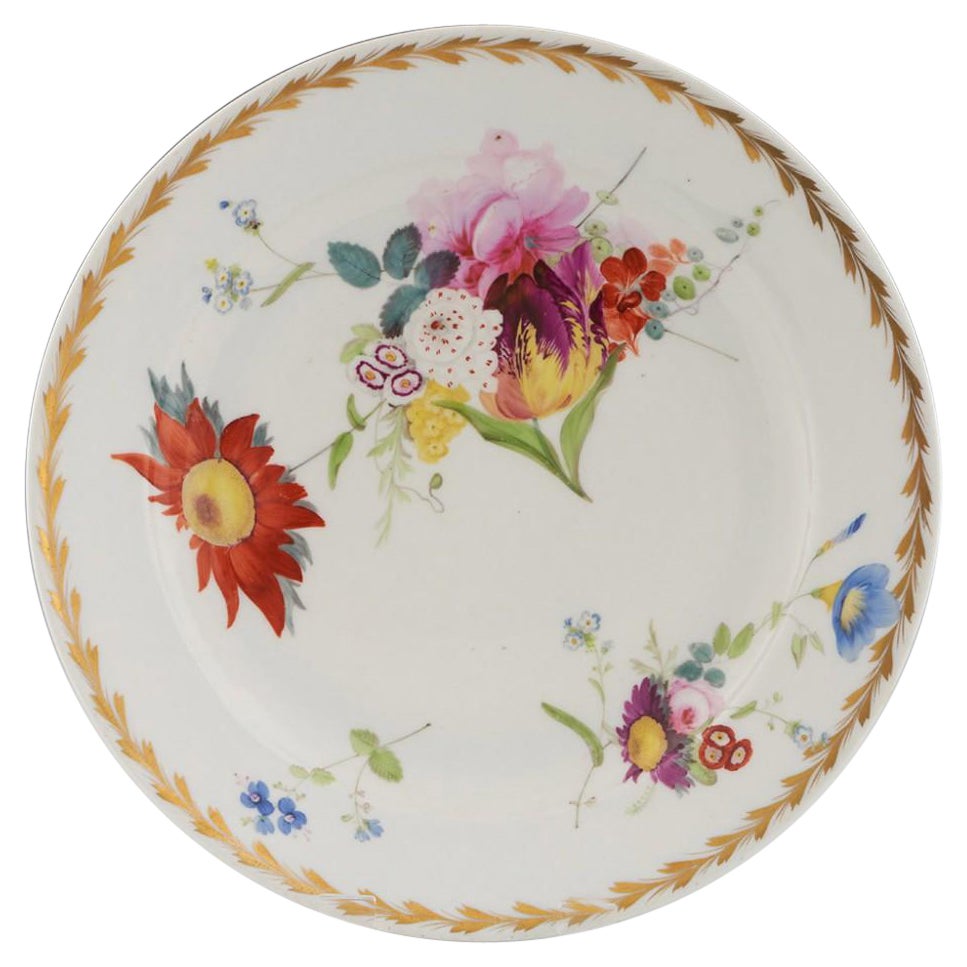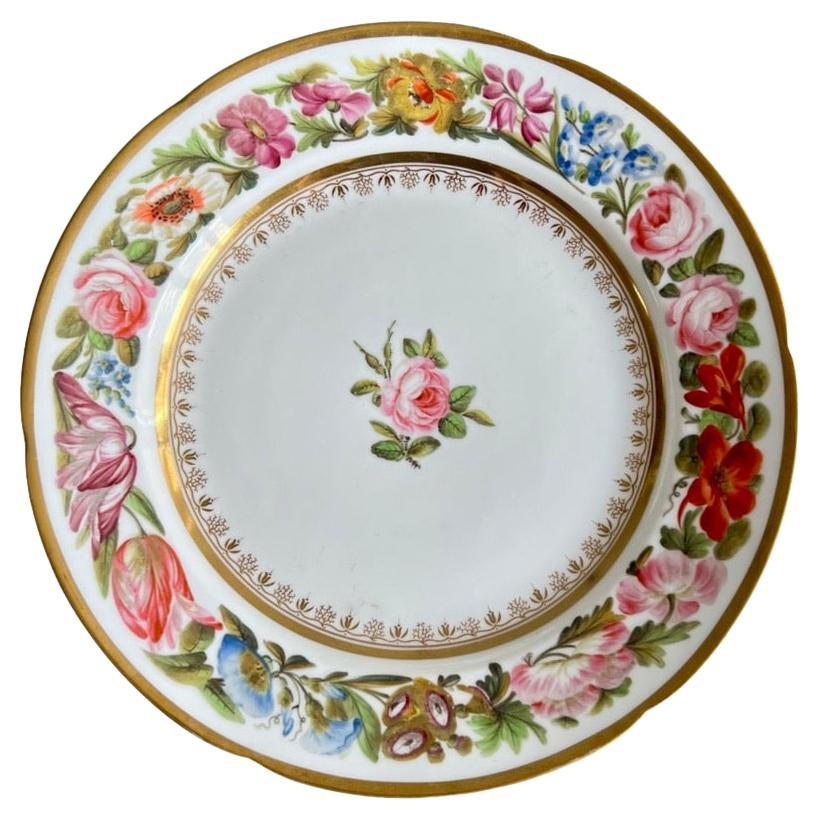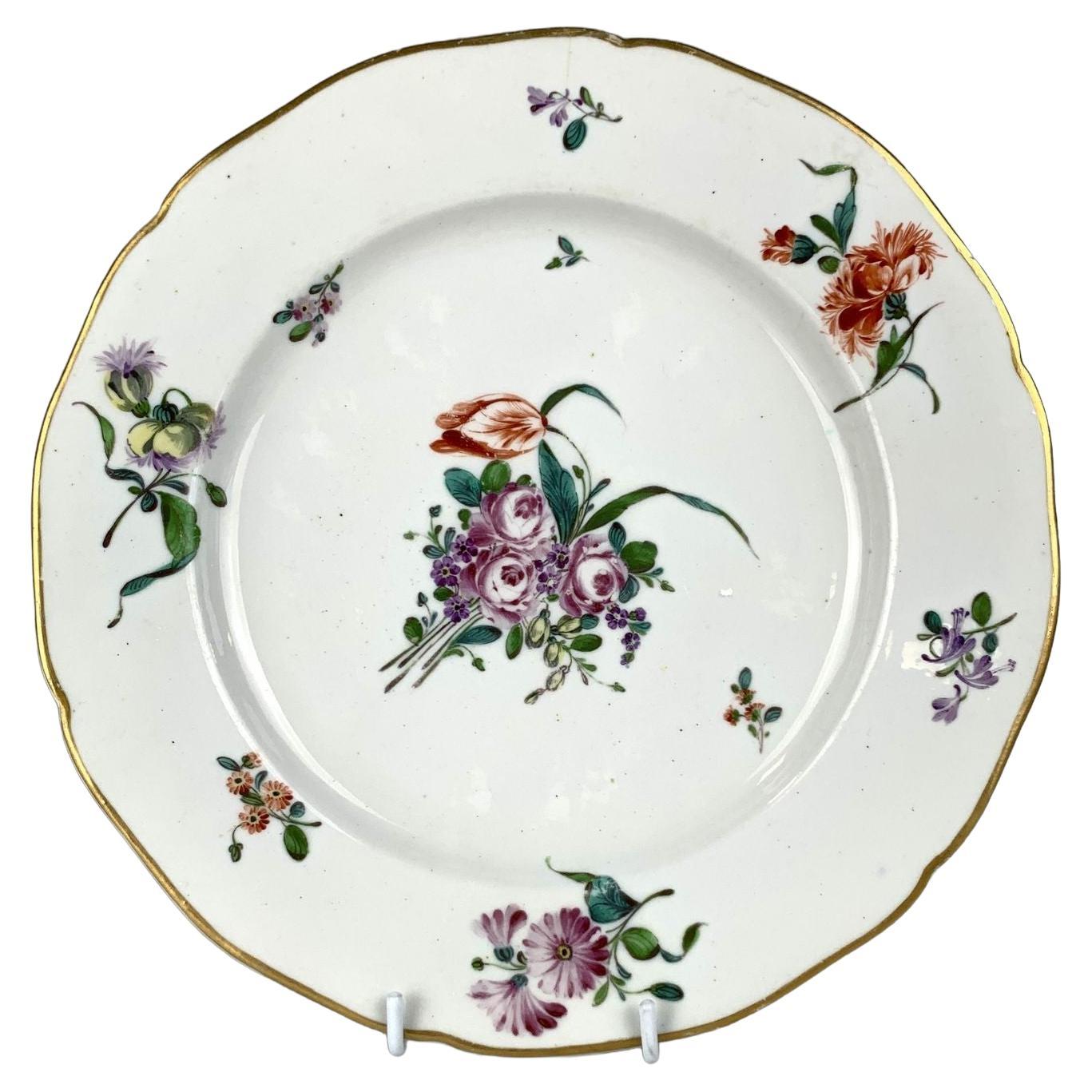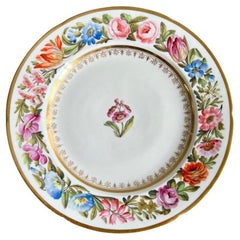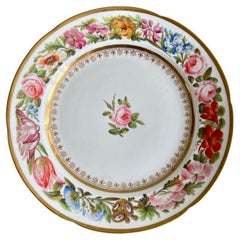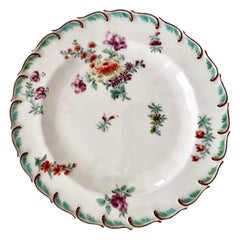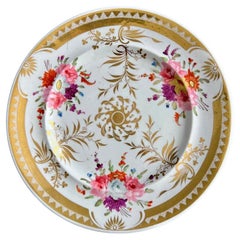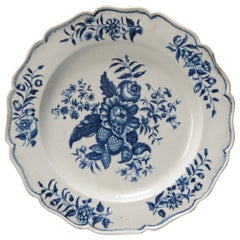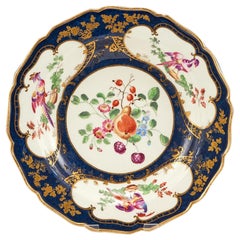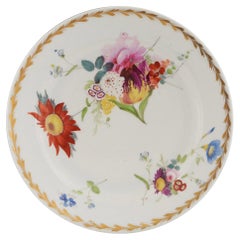Items Similar to Worcester Porcelain Plate, Flower Sprays by James Giles, ca 1770
Want more images or videos?
Request additional images or videos from the seller
1 of 13
Worcester Porcelain Plate, Flower Sprays by James Giles, ca 1770
$1,675
£1,271.63
€1,454.48
CA$2,340.22
A$2,602.83
CHF 1,359.12
MX$31,673.71
NOK 17,358.02
SEK 16,278.76
DKK 10,855.30
Shipping
Retrieving quote...The 1stDibs Promise:
Authenticity Guarantee,
Money-Back Guarantee,
24-Hour Cancellation
About the Item
This is a beautiful large plate made by Worcester in about 1770 in their First or the "Dr Wall" period. The plate has a pleasing slightly lobed rim, a white ground and beautifully painted flower sprays by the famous James Giles studio in London. Items painted by this studio are rare, and very desired.
Worcester was one of the first potteries in Britain to create items in porcelain. Alongside other great potteries such as Derby, Chelsea and Bow, they pioneered a new industry that would grow out to be huge in the following century. This item is from the first period, which is often called the "Dr Wall" period after its founder. In later years Worcester went through many different ownerships and styles, and ultimately it became the Royal Worcester factory that only finished operation in the early 21st Century.
James Giles, who ran a large decorating studio in London, bought stock from Derby, Worcester and others, but also decorated for these factories. In 1771, Worcester terminated their contract with Giles, as their owner Dr Wall became increasingly nervous about Giles's success and his crossover with other factories. He knew this would leave Giles in a vulnerable position. As Giles was more of an artist than a salesman, he was forced to sell his stock in 1774 and in 1776 he closed due to bankruptcy. Most of his workers ended up being poached by the Derby and Worcester factories, considerably strengthening their won workforces.
The plate is not marked, as quite common for the period.
DOCUMENTATION: A similar plate is shown in plate (a) on page 173 of "In Search of James Giles" by Gerald Coke.
CONDITION REPORT The plate is in excellent antique condition without any damage, repairs, crazing and has some minor rubbing and knife scratches, as visible in the pictures. There is some kiln grit on the underside of the plate.
Antique British porcelain is never perfect. Kilns were fired on coal in the 1700s, and this meant that china from that period can have some firing specks from flying particles. British makers were also known for their experimentation, and sometimes this resulted in technically imperfect results. Due to the shrinkage in the kiln, items can have small firing lines or develop crazing over time, which should not be seen as damage but as an imperfection of the maker's recipes, probably unknown at the time of making. Items have often been used for many years and can have normal signs of wear, and gilt can have signs of slight disintegration even if never handled. I will reflect any damage, repairs, obvious stress marks, crazing or heavy wear in the item description but some minor scratches, nicks, stains and gilt disintegration can be normal for vintage items and need to be taken into account.
There is widespread confusion on the internet about the difference between chips and nicks, or hairlines and cracks. I will reflect any damage as truthfully as I can, i.e. a nick is a tiny bit of damage smaller than 1mm and a chip is something you can easily see with the eye; a glazing line is a break in the glazing only; hairline is extremely tight and/or superficial and not picked up by the finger; and a crack is obvious both to the eye and the finger. Etcetera - I try to be as accurate as I can and please feel free to ask questions or request more detailed pictures!
DIMENSIONS (diameter) 22.5cm (8.75")
- Creator:1st Period Worcester Dr. Wall (Maker),James Giles (Artist)
- Dimensions:Height: 0.75 in (1.91 cm)Diameter: 8.75 in (22.23 cm)
- Style:George III (Of the Period)
- Materials and Techniques:
- Place of Origin:
- Period:1770-1779
- Date of Manufacture:circa 1770
- Condition:Wear consistent with age and use. in excellent antique condition without any damage, repairs, crazing and has some minor rubbing and knife scratches.
- Seller Location:London, GB
- Reference Number:Seller: HP-WOR041stDibs: LU4805143036362
About the Seller
5.0
Gold Seller
Premium sellers maintaining a 4.3+ rating and 24-hour response times
Established in 2016
1stDibs seller since 2019
225 sales on 1stDibs
- ShippingRetrieving quote...Shipping from: London, United Kingdom
- Return Policy
Authenticity Guarantee
In the unlikely event there’s an issue with an item’s authenticity, contact us within 1 year for a full refund. DetailsMoney-Back Guarantee
If your item is not as described, is damaged in transit, or does not arrive, contact us within 7 days for a full refund. Details24-Hour Cancellation
You have a 24-hour grace period in which to reconsider your purchase, with no questions asked.Vetted Professional Sellers
Our world-class sellers must adhere to strict standards for service and quality, maintaining the integrity of our listings.Price-Match Guarantee
If you find that a seller listed the same item for a lower price elsewhere, we’ll match it.Trusted Global Delivery
Our best-in-class carrier network provides specialized shipping options worldwide, including custom delivery.More From This Seller
View AllCoalport John Rose Plate, Abundant Flowers, T. Baxter Studio, ca 1805 (2)
By Coalport Porcelain, Thomas Baxter
Located in London, GB
This is a stunning and extremely rare plate made by Coalport around the year 1805, and decorated in the London studio of Thomas Baxter.
We have one more of these plates in stock, pl...
Category
Antique Early 1800s English George III Porcelain
Materials
Porcelain
John Rose Coalport Plate, Abundant Flowers, T. Baxter Studio, ca 1805 (1)
By Coalport Porcelain, Thomas Baxter
Located in London, GB
This is a stunning and extremely rare plate made by Coalport around the year 1805, and decorated in the London studio of Thomas Baxter.
We have one more of these plates in stock, pl...
Category
Antique Early 1800s English George III Porcelain
Materials
Porcelain
Chelsea Plate, Feather Moulded with Flowers, Red Anchor Mark, ca 1755
By Chelsea Porcelain
Located in London, GB
This is a beautiful plate made by Chelsea in circa 1755, which is known as the "Red Anchor" period of the factory.
Chelsea was one of the very early adopters of porcelain in the British china industry. Founded in 1744 the Chelsea pottery was for about 40 years the leading maker of fine chinaware, excelling in their sense of style, perfection and constant innovation and inspiring many following generations of china makers.
The company was started by French silversmith Nicholas Sprimont and you can see the influence of the French style of silverware...
Category
Antique 1750s English George II Dinner Plates
Materials
Porcelain
$916 Sale Price
20% Off
Free Shipping
Yates Plate, White, Gilt Shark Teeth Pattern and Floral Reserves, ca 1825
By William Yates
Located in London, GB
This is beautiful plate made by the Yates factory in about 1825. The plate is decorated with in a white ground with finely hand painted flower reserves, gilt sprigs and a characteris...
Category
Antique 1820s English Regency Porcelain
Materials
Porcelain
$304 Sale Price
20% Off
Free Shipping
Mansfield Porcelain Plate, Monochrome Sepia Rose W. Billingsley, 1799-1802 (1)
By William Billingsly
Located in London, GB
This is one of a pair of beautiful plates made by William Billingsley at the Mansfield Pottery, between 1799 and 1802. The plates, manufactured by Coalport, have a pleasing slightly diapered shape. They were decorated with beautiful monochrome sepia flowers and a simple gilt rim by William Billingsley.
Please see separate listing for the matching plate; I would be happy to offer some discount if you interested in purchasing both plates.
William Billingsley was a brilliant but notoriously difficult man who left behind a trail of debts, broken hearts and mystery - but he was also one of the most important people in the history British porcelain. Billingsley revolutionised the way British decorators painted flowers; he added a freedom and artistry that now singles out British flower painting, and he created a new technique for painting roses, which you can see in this design. Billingsley trained and worked at Derby, and then started his own pottery at Pinxton. He then left to start a decorating studio at Mansfield, where he decorated wares from various potteries, among which Derby, Coalport, Whitehead and others. After that, he spent a period in Worcester, and then went to Wales where he set up a pottery in Nantgarw, worked at the Swansea pottery for a while and then returned to Nantgarw. While in Nantgarw he created some of the best porcelain ever made, but racking up great debts. He ended up running off in the dead of night and ending his days at Coalport painting flowers.
Items painted by William Billingsley are rare and very much in demand - together with Thomas Baxter's work they are probably among the most desired pieces of British porcelain.
The plate is marked with an impressed 7, the number associated with Billingsley. The attribution of this plate to William Billingsley is due to the fact that he painted nearly identical flowers on a Coalport jug...
Category
Antique Early 1800s English George III Porcelain
Materials
Porcelain
Mansfield Plate, Monochrome Sepia Ranunculus by W. Billingsley, 1799-1802 (2)
By William Billingsly
Located in London, GB
This is one of a pair of beautiful plates made by William Billingsley at the Mansfield Pottery, between 1799 and 1802. The plates, manufactured by Coalport, have a pleasing slightly diapered shape. They were decorated with beautiful monochrome sepia flowers and a simple gilt rim by William Billingsley.
Please see separate listing for the matching plate; I would be happy to offer some discount if you interested in purchasing both plates.
William Billingsley was a brilliant but notoriously difficult man who left behind a trail of debts, broken hearts and mystery - but he was also one of the most important people in the history British porcelain. Billingsley revolutionised the way British decorators painted flowers; he added a freedom and artistry that now singles out British flower painting, and he created a new technique for painting roses, which you can see in this design. Billingsley trained and worked at Derby, and then started his own pottery at Pinxton. He then left to start a decorating studio at Mansfield, where he decorated wares from various potteries, among which Derby, Coalport, Whitehead and others. After that, he spent a period in Worcester, and then went to Wales where he set up a pottery in Nantgarw, worked at the Swansea pottery for a while and then returned to Nantgarw. While in Nantgarw he created some of the best porcelain ever made, but racking up great debts. He ended up running off in the dead of night and ending his days at Coalport painting flowers.
Items painted by William Billingsley are rare and very much in demand - together with Thomas Baxter's work they are probably among the most desired pieces of British porcelain.
The plate is marked with an impressed 7, the number associated with Billingsley. The attribution of this plate to William Billingsley is due to the fact that he painted nearly identical flowers on a Coalport jug...
Category
Antique Early 1800s English George III Porcelain
Materials
Porcelain
You May Also Like
Antique Worchester Porcelain Plate Flower Pattern English, ca 1760-1770
Located in Amsterdam, Noord Holland
An exquisite nicely shaped and good sized Worcester plate with moon crest mark at base.
Additional information:
Material: Porcelain & Pottery
Type: Plates
Color: Blue & White
Region...
Category
Antique 18th Century European Decorative Dishes and Vide-Poche
Materials
Porcelain
$390 Sale Price
20% Off
A Giles Decorated Worcester Lady Mary Wortley Deep Plate, c1770
By James Giles, 1st Period Worcester Dr. Wall
Located in Tunbridge Wells, GB
A Giles Decorated Worcester Lady Mary Wortley Deep Plate, c1770
Additional information:
Date : 1768-1773
Period : George III
Marks : Underglaze blue square seal mark
Origin : Worces...
Category
Antique 18th Century English George III Porcelain
Materials
Porcelain
Swansea Porcelain Dessert Plate By Henry Morris, c1816
By Swansea Porcelain
Located in Tunbridge Wells, GB
22121707 Swansea Porcelain Dessert Plate By Henry Morris, c1816
Additional information:
Date : 1815-1817
Period : George III
Marks : none
Origin : Swansea, South Wales
Colour : poly...
Category
Antique 19th Century English George III Porcelain
Materials
Porcelain
Antique Chelsea Derby Porcelain Plate England Ca. 1775 18th Century Hand-Painted
By Chelsea Porcelain
Located in Katonah, NY
This Chelsea-Derby dish, made in England around 1775, is hand-painted with beautiful flower designs.
The center features purple roses and an orange tulip, accented by small yellow fl...
Category
Antique Mid-18th Century English Rococo Decorative Dishes and Vide-Poche
Materials
Porcelain
22121706 Swansea Porcelain Dessert Plate By Henry Morris, c1816
By Swansea Porcelain
Located in Tunbridge Wells, GB
22121706 Swansea Porcelain Dessert Plate By Henry Morris, c1816
Additional information:
Date : 1815-1817
Period : George III
Marks : none
Origin : Swansea, South Wales
Colour : poly...
Category
Antique 19th Century English George III Porcelain
Materials
Porcelain
Antique Coalport Porcelain Platter Hand Painted Floral England Circa 1825
By Coalport Porcelain
Located in Katonah, NY
This antique porcelain platter was made by Coalport in England around 1825.
It is hand-painted with vivid floral sprays in shades of pink, yellow, and purple, centered within an oval...
Category
Antique Early 19th Century Regency Platters and Serveware
Materials
Porcelain
More Ways To Browse
Chelsea Plate
Rare Antique Knife
Antique Plates 1700s
Chelsea Porcelain Plate
Silver 1776
Royal Worcester China Plates
Antique Chinese Knife
Vintage Demitasse Cup And Saucer Set
Antique Glass Dinnerware
Austrian Imperial Porcelain
Cherub Figurines
Johann Joachim Kaendler
Minton Aesthetic Movement
Porcelain Cow
Rosebud Antique
Royal Copenhagen Christmas
Royal Worcester Blue Antique
Silver Compendium
